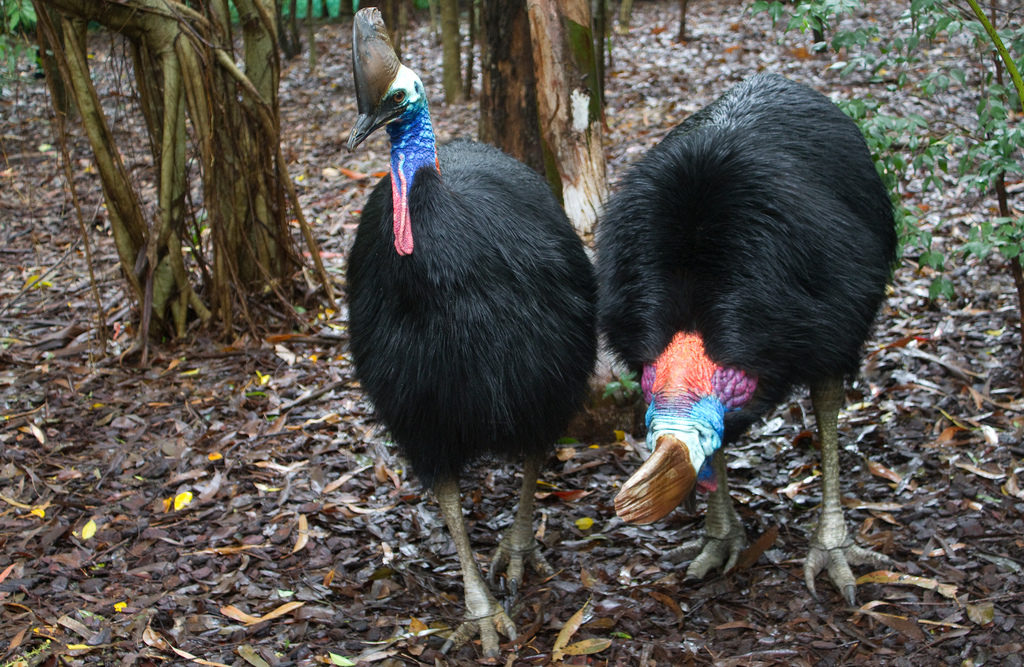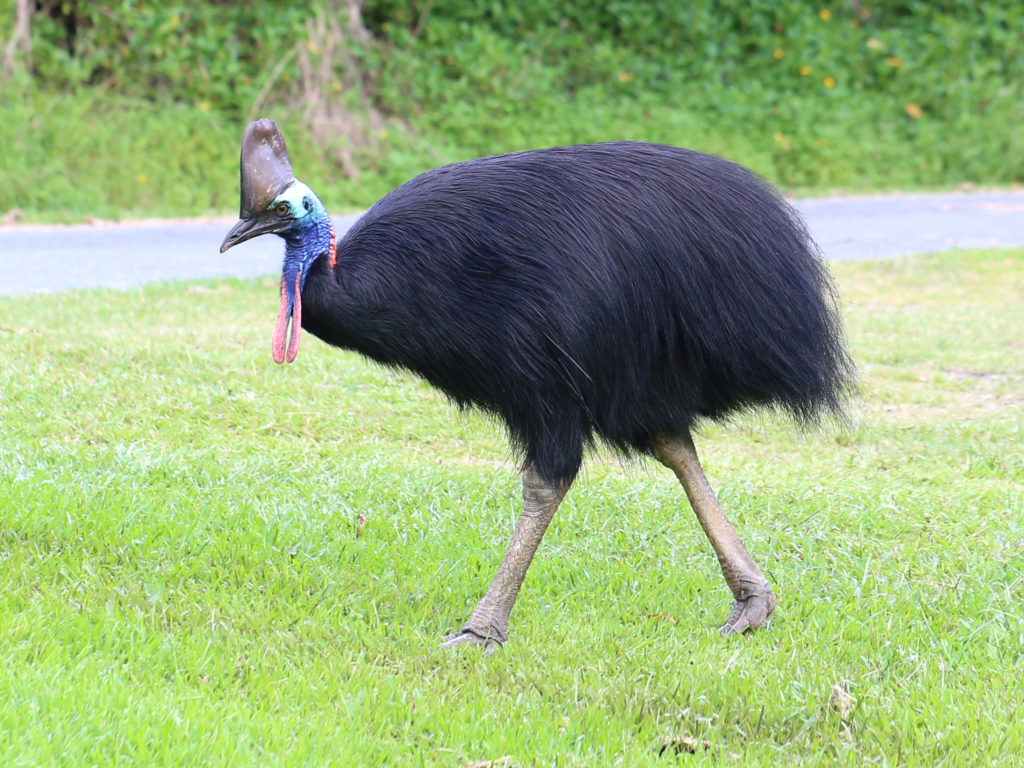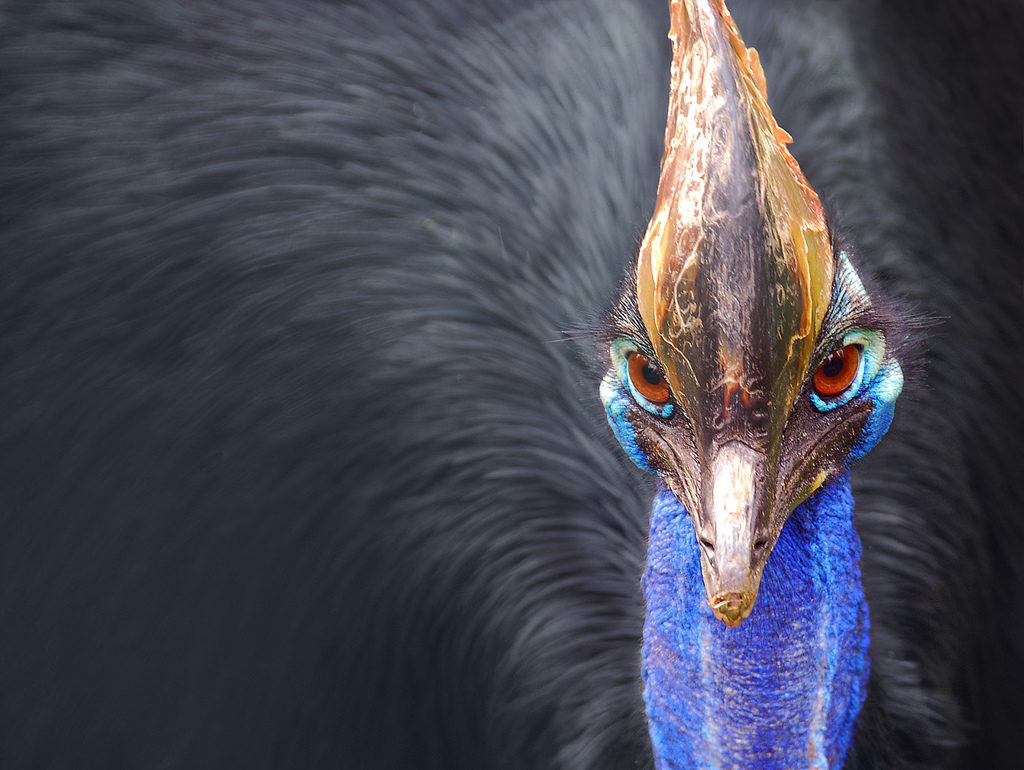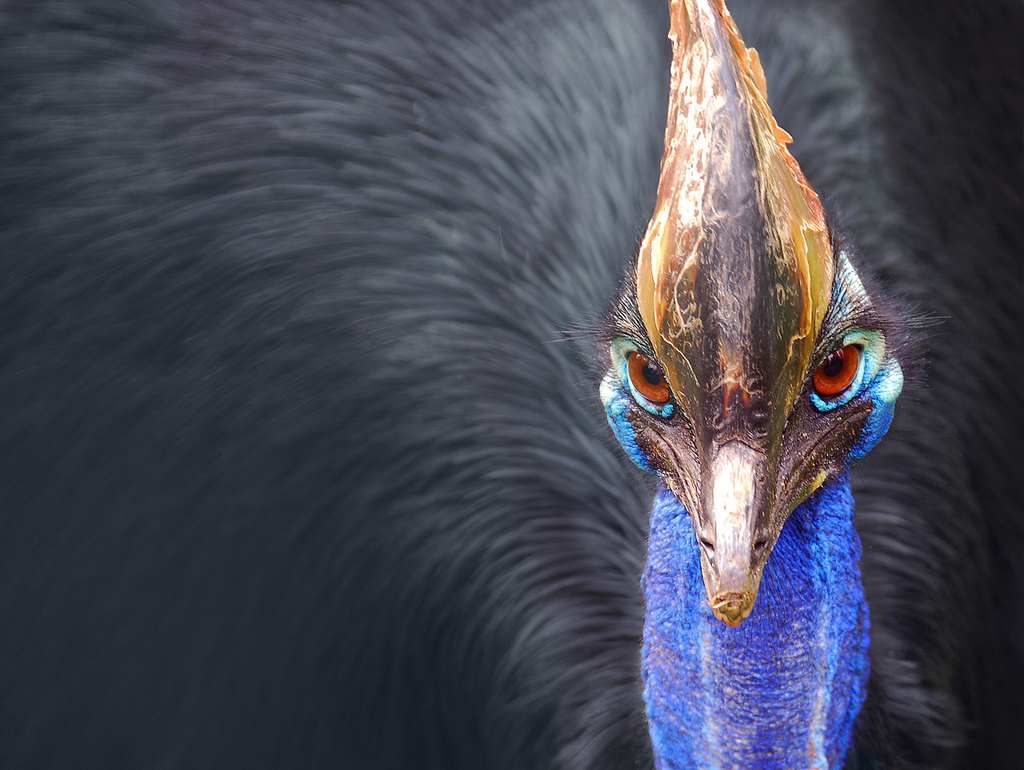Cassowaries are large, flightless birds that belong to the Ratites family. Not many people have seen or heard about this animal before. That’s why we have created this list of 26 amazing and interesting facts about cassowaries.
1. There are three species of cassowaries currently living in the wild. They can be found in New Guinea and north eastern parts of Australia. They prefer wet rainforests, lowland and very dense forests.
2. While cassowaries are a bit smaller than emus and ostriches, they’re still a very large bird. They are known to reach heights between 59 and 79 inches and weigh between 55 and 129 pounds. Female cassowaries tend to be bigger than males.
3. The color of their head and neck changing depending on the mood of that particular cassowary.
4. They look like a combination of an ostrich and a turkey. They have a big body that’s covered in black feathers, a bluish head and reddish neck. The upper part of their legs is blue and the lower part is grey.
5. Cassowaries have a crest on their head that resembles a helmet. It’s called a “casque” and it’s usually 6 inches long and reaches 6.7 inches in height.
6. The casque is used primarily for self-defense. It also prevents skull injuries during fights between cassowaries and allows easier movement through their dense environment.

7. Cassowaries have amazing eyesight and hearing. They’re known to detect very low pitched sounds without problems.
8. They’re omnivores, which means that they eat both plants and animals. They can usually been seen eating a variety of fruit, seeds, shoots, fungi, small invertebrates and insects.
9. They’re known for hearing sounds that are up to 3 miles away.
10. Cassowaries can’t fly because they don’t have a chest bone that can support their muscles during flight. However, they’re very fast runners. They can run 31 miles per hour and jump up to 5 feet in the air.
11. They’re also excellent swimmers and have been known to swim long distances.
12. Cassowaries are very important to the local ecology as their feces contains undigested seeds and fertilize the ground.
13. Their mating season takes place between June and October. The male cassowaries will build nests where the female will lay between 3 and 8 eggs. The eggs are green or blue in color. Female cassowaries are also known for using several different nests to leave her eggs.
14. Once the females leave their eggs, the males incubate them for 50 days. It’s also the males that take care of the offspring until they’re one year old.
15. Newborn cassowaries are brown and covered in stripes. Within the first year of their life, they will learn how to find food, catch insects, worms, snails and frogs from the males.

16. Cassowaries are known to survive between 12 and 19 years in the wild and between 40 to 50 years in captivity due to a much safer habitat.
17. In Australia, cassowaries are listed as endangered as there are only up to 2,000 left.
18. Cassowaries aren’t naturally aggressive and won’t attack unless they feel provoked or threatened. However, they also prefer to have space and a person getting close to them will usually provoke them.
19. The cassowaries middle claw can be up to 12 centimeters long and is often used in fights or in self defense.
20. They are known for making the lowest sounding pitch out of any other birds.
21. Cassowaries are very territorial and will defend their patch if they feel threatened.
22. While they are territorial, they do try and avoid confrontation whenever possible. They will announce their presence by making a deep rumbling sound.

23. If two cassowaries meet, dominance is displayed through a stretch display. This involves stretching the neck, raising the feathers and letting out a deep rumbling call. If this doesn’t settle the dispute, the two birds will fight each other by leaping in the air and kicking at each other with their inner claw.
24. In the wild, male cassowaries can usually be seen foraging for food with 3 or 4 chicks behind him learning what to do.
25. Cassowaries are very solitary creatures and only tolerate each other during the courting and mating process.
26. They’re known to travel vast distances. The average home range is usually 75 to 80 hectares and sometimes even more.




